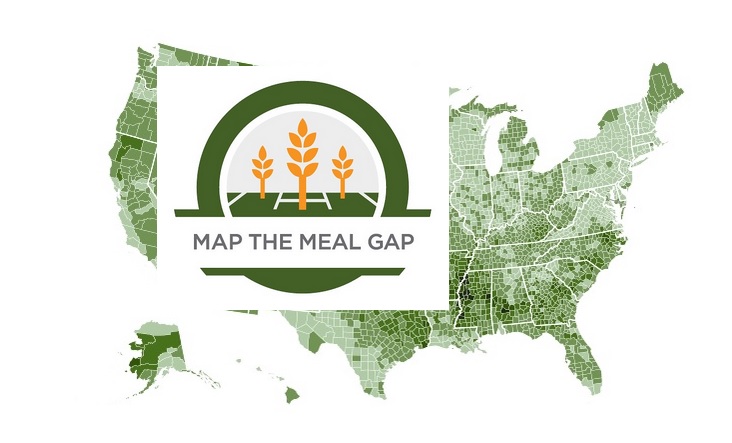
Comstock Park, Michigan — April 20, 2015 — For the first time in five years, the percentage of people struggling with hunger in West Michigan and the Upper Peninsula has increased, according to a new study by Feeding America. Hunger threatens one in seven people in the region, including one in five children.
The researchers behind Map the Meal Gap 2015, released April 14, brought together the latest data from the United States Department of Agriculture, the Bureau of Labor Statistics and the Census Bureau to determine that 49 million Americans were at risk of hunger in 2013. The national rate of 15.8 percent is down from 15.9 percent in 2012.

The report finds 330,910 people at risk of hunger in West Michigan and the Upper Peninsula, the region served by Feeding America West Michigan Food Bank. That represents an increase in the food insecurity rate from 13.4 percent in 2012 to 14 percent in 2013.
While that rate is lower than the overall state figure of 16.4 percent, Feeding America West Michigan’s service area contains some of the highest-need communities in Michigan. Rural communities in Northern Michigan and the Upper Peninsula are especially vulnerable with Lake County laying claim to the highest childhood food insecurity rate in the state at 31.4 percent.
“Even as the economy improves, far too many people are still struggling to meet their basic needs,” said Feeding America West Michigan CEO Ken Estelle. “This report provides further evidence that more work needs to be done on this issue.”
The need for food assistance has grown greatly in the last decade, and Feeding America West Michigan has grown with it. Sourcing food from hundreds of farmers, retailers and processors, the Food Bank distributes millions of meals to people in need each year through a network of more than 1,100 food pantries, soup kitchens and afterschool programs. In 2014, the Food Bank distributed 26.5 million pounds of food (a record for the organization) and is currently trending 5 percent ahead of 2014 after the first quarter.
“It’s never simply about the volume of food,” Estelle emphasized. “We want to make sure we’re getting the right kinds of food to the communities where need is highest.”
Beginning in 2013, Feeding America West Michigan expanded its distribution of fresh fruits and vegetables to two high-risk population groups: local schools and rural communities in the Upper Peninsula. Fifteen schools are currently enrolled in the Food Bank’s Mobile Food Pantry program with another five expected to join by the end of the school year, while Mobile Food Pantry distribution to the Upper Peninsula began in 2013 and reached 300,000 pounds last year.
“The economics of need are very complex, but the bottom line for us is simple: None of our neighbors should have to face an empty cupboard when they come home at the end of the day. There’s enough food to feed everyone in our state, and with enough community support, we can make that happen,” Estelle said.
Findings from Map the Meal Gap 2015
• Average Cost of a Meal in the U.S.: $2.79
• Average Cost of a Meal in Michigan: $2.57
• 49 million Americans are food insecure
• 15.8 million American children are food insecure
• 1.6 million Michiganders are food insecure
• 480,490 Michigan children are food insecure
• 330,910 people are food insecure in West Michigan and the Upper Peninsula
• 113,890 children are food insecure in West Michigan and the Upper Peninsula

About Feeding America West Michigan Food Bank. Serving local families in need since 1981, Feeding America West Michigan Food Bank reclaims safe surplus food from farmers, manufacturers, distributors and retailers. We distribute that food through a network of more than 1,100 food pantries, soup kitchens, and shelters in 40 counties from the Indiana border through the Upper Peninsula. Each year, an estimated 492,100 people receive food from Feeding America West Michigan. For more information, visit feedwm.org.
About Map the Meal Gap. Map the Meal Gap 2015 is based on an analysis of statistics collected by the U.S. Department of Agriculture, U.S. Census Bureau, and the U.S. Bureau of Labor Statistics in 2013, the most recent year for which data is available. The study is supported by founding sponsor The Howard G. Buffett Foundation as well as The ConAgra Foods Foundation and Nielsen. The lead researcher is Dr. Craig Gundersen, professor of Agricultural and Consumer Economics at the University of Illinois, executive director of the National Soybean Research Laboratory and member of Feeding America’s Technical Advisory Group. To view the data, visit Map.FeedingAmerica.org.
